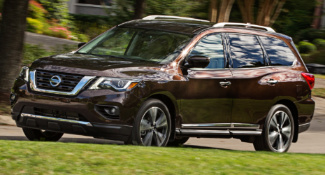
2020 Nissan Pathfinder Review
The 2020 Nissan Pathfinder is a three-row, midsize family crossover SUV. Available in four trim levels, it has excellent towing capacity and high safety ratings but is it hurt by its newer competition?

The 2020 Nissan Pathfinder is a three-row, midsize family crossover SUV. Available in four trim levels, it has excellent towing capacity and high safety ratings but is it hurt by its newer competition?

Check out the 2020 Nissan Pathfinder from every angle, including interior and exterior photos.